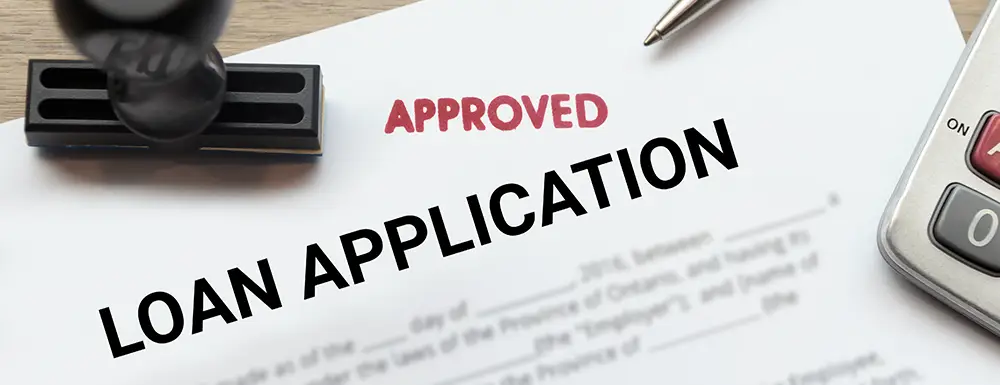Knowing how to get financed for a business can be a total game-changer – whether you’re launching something new, expanding operations, or simply keeping things running smoothly. The right business loan at the right time can open doors you didn’t think possible.
But the application process can be overwhelming. Between choosing the right type of loan, figuring out what lenders are looking for, and gathering stacks of documents, it’s enough to make any business owner pause.
That’s why we’ve put together this step-by-step guide, taking the guesswork out of applying for a business loan. We’ll walk you through the process, from understanding your options to preparing everything you need to approach lenders and boost your chances of approval.
Step 1: Get Clear on Why You Need the Business Loan
Before you get into the application process, take a step back and ask yourself: What exactly do I need this loan for? This first step is key to figuring out the right financing option for your business. Different loan types are tailored for different goals, whether it’s buying equipment, purchasing real estate, covering day-to-day expenses, or fueling expansion.
For example, if you’re eyeing a new delivery van or upgrading your machinery, equipment financing might be your best bet. Looking to buy a storefront or warehouse? There are specific loans for that too. And if growth is the name of the game, a working capital loan or SBA loan could be a better fit.
You’ll need to clearly explain your loan’s purpose when you apply, so having a solid objective upfront will help you stay focused – and make it easier for lenders to say “yes.”
While you’re at it, start thinking about how much funding you’ll actually need. Different loans come with different borrowing limits, and having a ballpark figure early on can help guide your search and set realistic expectations.
Step 2: Understand Your Business Loan Options

Once you know why you need funding, the next step is figuring out which type of loan fits your business best. And here’s the thing: there’s no one-size-fits-all loan. From traditional bank loans to flexible online options, each comes with its own set of pros, cons, and ideal use cases.
Taking time to explore your options helps you choose the right loan for your situation and boosts your chances of getting approved. Lenders want to see that you’ve done your homework and are asking for the right kind of financing based on your goals, business history, and ability to repay.
Here’s a quick breakdown of the most common types of business loans out there:
SBA Loans (US Small Business Administration)
SBA loans are a popular option for small businesses because they often come with lower interest rates and longer repayment terms. They’re offered by lenders but backed by the SBA, which reduces the lender’s risk. The trade-off? They can take a while to get approved, and the application process is more involved. Still, if you qualify, they can be an excellent tool for everything from equipment purchases to long-term growth. Loan amounts can go up to $5 million.
Want to make the most of an SBA loan? Start here with our Guide to Everything You Need to Know About SBA Loans.
Business Term Loans
This is one of the most classic loans most people picture. Borrow a lump sum from a traditional bank or credit union and pay it back over time (usually 10 to 20 years). These loans can be pretty flexible in terms of how much you borrow and how you use the funds. That said, they typically require at least two to three years of business history, solid financials, and a good credit profile. Banks may also look for consistent profits before signing off.
Looking for funding without putting up collateral? Explore the Best 5+ Alternative Start Up Business Loans, including unsecured and term loan options.
Personal Loans
If you’re just getting started and don’t yet have a long business track record, a personal loan might be an option. These are based on your personal credit, not your business history, which can make them more accessible for startups or new entrepreneurs. Just keep in mind: you’re personally on the hook for repayment, so weigh the risk carefully.
Online Business Loans
Offered by online lenders, these are similar to traditional term loans but typically have faster approval times and more flexible qualifications. Because they don’t have the same overhead as banks, they may offer competitive terms – just make sure to read the fine print and check for any high interest rates or fees.
Microloans
Need a smaller amount of funding? Microloans – usually ranging from $500 to $– are ideal for covering minor expenses, like buying inventory, supplies, or launching a small project. They’re often available through nonprofit organizations and mission-driven lenders, and can be a great fit for very small businesses or sole proprietors.
Step 3: Find Out If You Meet the Requirements
Lending money is risky. That’s why lenders have a checklist to make sure you’re a safe bet.
Before you invest your time and energy into applying, it’s smart to check whether you meet a lender’s requirements. Because if you don’t? You could spend weeks pulling together paperwork only to hit a dead end.
Most lenders base their decisions on what’s known as the five C’s of credit. Here’s a breakdown of what they’re looking for, and why each one matters:
Credit Score
Both your personal and business credit scores are important here. Most lenders like to see a personal score of at least 680 and a business score of 160 or higher. A strong credit history shows that you’ve handled debt responsibly in the past.
Collateral
This is something of value – like a home, vehicle, or piece of equipment – that you pledge as a backup in case you can’t repay the loan. Not all loans require collateral, but many traditional lenders do.
Capital
Lenders want to see that you have some skin in the game. Often, they’ll expect a down payment of up to 20% of the loan amount. This shows commitment and reduces their risk.
Capacity
Simply put: can your business generate enough income to comfortably make your loan payments? Lenders will look at your cash flow, revenue, and any other debts you’re juggling to assess your ability to repay.
Character
This one’s a bit more subjective. Lenders consider your overall trustworthiness, experience, and reputation. They may review your resume, check for any past bankruptcies or legal issues, and even look at your standing in the community.
While the 5 C’s give you a solid framework, it’s worth noting that not all lenders weigh each factor the same way. Some may be more flexible on credit scores or collateral – especially if you’re working with a mission-based lender, a credit union, or applying for a smaller loan.
Tip: Don’t be afraid to talk to lenders directly. Reach out to two or three and ask about their specific requirements. A quick conversation could save you a lot of time – and give you insight into which option is the best fit.
Step 4: Gather Your Documents


Now comes the paperwork part. And yes, there’s quite a bit of it. Applying for a business loan isn’t exactly a light lift, especially when it comes to documentation. But don’t worry. We’ll break it down so you know what to expect.
Lenders want to see a full financial picture of both you and your business before they make a decision. That means pulling together several types of documents to show you’re organized, trustworthy, and financially stable.
Here’s what you’ll typically need to have on hand:
- Personal and Business Bank Statements
Most lenders ask for several months of bank statements for both your business and your personal accounts. - Tax Returns (Personal and Business)
Plan to provide at least three years’ worth. These help lenders verify your income, business activity, and financial consistency. - Financial Statements
That includes income statements, balance sheets, and cash flow statements for the past three years. Some lenders may also want to see your financial projections for the next few years—especially if you’re using the loan for growth. - Identification and Basic Info
This covers your driver’s license, Social Security number (SSN), employer identification number (EIN), business license, and business address. - Business Plan or Loan Proposal
This is your chance to show lenders how you plan to use the funds—and that you’ve thought it through. Include details about your products or services, management team, financial goals, and how the loan will help you succeed. - Collateral Documentation
If you’re putting up collateral, you’ll need to provide documentation that shows what the assets are and how much they’re worth. - Personal Guarantee
Most lenders will require you to sign a personal guarantee, which means that if your business can’t repay the loan, you agree to take on the responsibility personally.
It may feel like a lot, but having all of this ready ahead of time can speed up the process.
Tip: Create a folder (physical or digital) to organize these documents in advance. That way, when you’re ready to apply, you won’t be scrambling to find what you need.
Step 5: Understand the Timeline
Getting a business loan takes time. And not just a few days. Think several weeks, or even a few months, from start to finish.
Once you submit your application, there’s still a lot that happens behind the scenes: document reviews, credit checks, underwriting, and approval processes. And if you’re applying for an SBA loan? Be prepared to wait even longer, as those are highly competitive and involve more red tape.
So here’s the key takeaway: business loans aren’t a quick fix for short-term cash flow issues. They’re best suited for planned expenses, growth initiatives, or long-term investments where you can afford to wait a bit for funding.
Make sure to give yourself enough runway – both for putting together the application and for the review process. Being realistic about the timeline will help you avoid unnecessary stress and make better financial decisions in the meantime.
Need to fund your business? Business loans are just one option. Discover the 7 Best Ways to Finance Your Small Business.
Tips to Boost Your Chances of Approval


Getting approved for a business loan isn’t always easy. But there are things you can do to improve your odds. And it starts with preparation.
1. Know what lenders are looking for.
Understanding the 5 C’s (remember those?) is your first line of defense. If you know where you stand – and where you might fall short – you can take action before applying.
For example, if your credit score is a little low, focus on making on-time payments and reducing existing debt. If your business doesn’t have much of a track record, consider building stronger financials or starting with a smaller loan to establish trust with lenders.
2. Talk to loan officers.
Every lender is a little different. Some prioritize credit score, others look more closely at your business plan or annual revenue. By speaking directly with a loan officer, you can get a clearer idea of what their institution values – and tailor your application accordingly.
3. Don’t go it alone.
There’s help out there! Many organizations, including Guidant Financial, offer personalized guidance and mentorship to help you navigate the loan process. From reviewing your credit profile to recommending the best loan type for your industry, working with an advisor can make a big difference.
Remember, even if you get turned down the first time, it’s not the end of the road. Ask for feedback, make improvements, and come back stronger next time.
Key Terms to Know Before You Apply
The loan world comes with its own language. Here are a few terms that are helpful to understand as you prepare to apply:
Credit Scores: Your credit score is a three-digit number that tells lenders how well you manage debt. It’s based on factors like payment history, total debt, and number of open accounts. Scores range from 300 to 850, with 680+ being the sweet spot for most business loans.
Loan Terms: “Loan terms” can refer to a few different things, but most often it’s the length of the loan – like 5, 10, or even 20 years. The term also influences your monthly payment amount and total interest over time.
Interest Rates: This is the cost of borrowing money, usually expressed as a percentage. A lower rate means you’ll pay less in the long run, so it pays to shop around and compare offers.
Loan Agreement: This is the official contract between you and the lender. It lays out everything: the loan amount, repayment schedule, fees, interest rate, and any penalties for early repayment. Always, always read your loan agreement thoroughly before signing.
Need Help? Guidant Financial Is Here for You
We’ve helped thousands of small business owners secure funding that fits their goals, and we can help you do the same. Whether you need help comparing loan options, determining how much you can qualify for, or exploring alternatives like Rollovers for Business Startups (ROBS), Guidant Financial can guide you every step of the way.
We’re here to help you move forward with confidence – and get the funding you need to create the business (and life) you want.
Call us today at 425-289-3200 for a free, no-pressure business consultation to get started — or pre-qualify in minutes for business financing now!


“Every time we’ve done something with Guidant, it’s been quick and efficient. For me now, personally involved, the biggest thing is all the support services; I signed up for the full program. That’s the biggest thing: For me, it’s become a one-stop shop.”
— Larry Strain, A Rustyc Spoon


